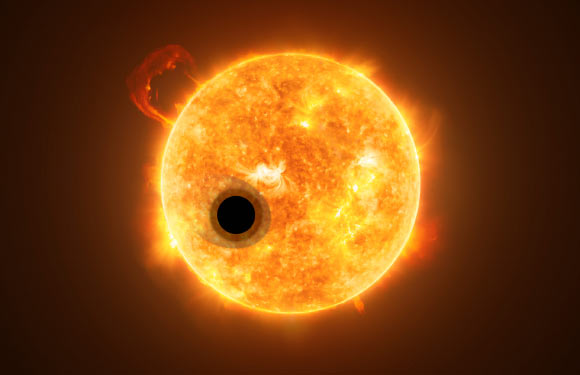With a mass of 1.8 Neptune masses and a radius of Jupiter, WASP-107b presents a challenge to planet formation theories.
WASP-107 is a highly active K-type main sequence star located about 212 light-years away in the constellation of Virgo.
First detected in 2017, WASP-107b is one of the least dense exoplanets known — a type that astrophysicists have dubbed ‘super-puff’ or ‘cotton-candy’ planets.
It orbits very close to the star — over 16 times closer than the Earth is to the Sun — once every 5.7 days.
It has one of the coolest atmospheres of any of the exoplanets discovered, although at 500 degrees Celsius (932 degrees Fahrenheit) is still radically hotter that Earth.
Continued...
Source
WASP-107 is a highly active K-type main sequence star located about 212 light-years away in the constellation of Virgo.
First detected in 2017, WASP-107b is one of the least dense exoplanets known — a type that astrophysicists have dubbed ‘super-puff’ or ‘cotton-candy’ planets.
It orbits very close to the star — over 16 times closer than the Earth is to the Sun — once every 5.7 days.
It has one of the coolest atmospheres of any of the exoplanets discovered, although at 500 degrees Celsius (932 degrees Fahrenheit) is still radically hotter that Earth.
Continued...
Source






















